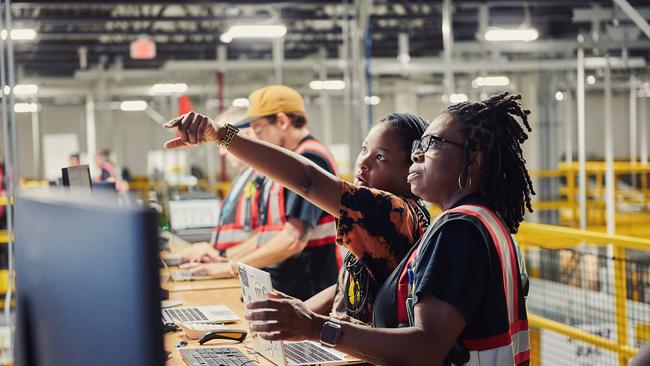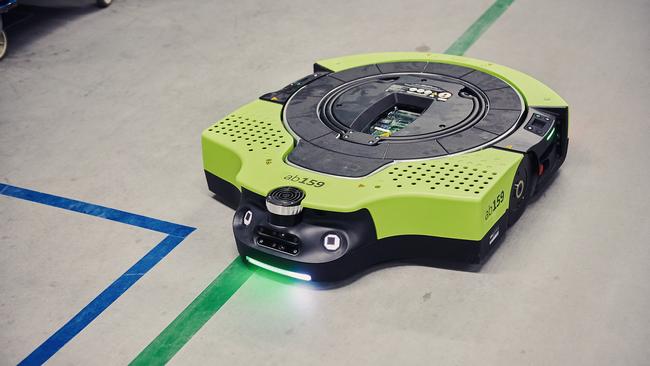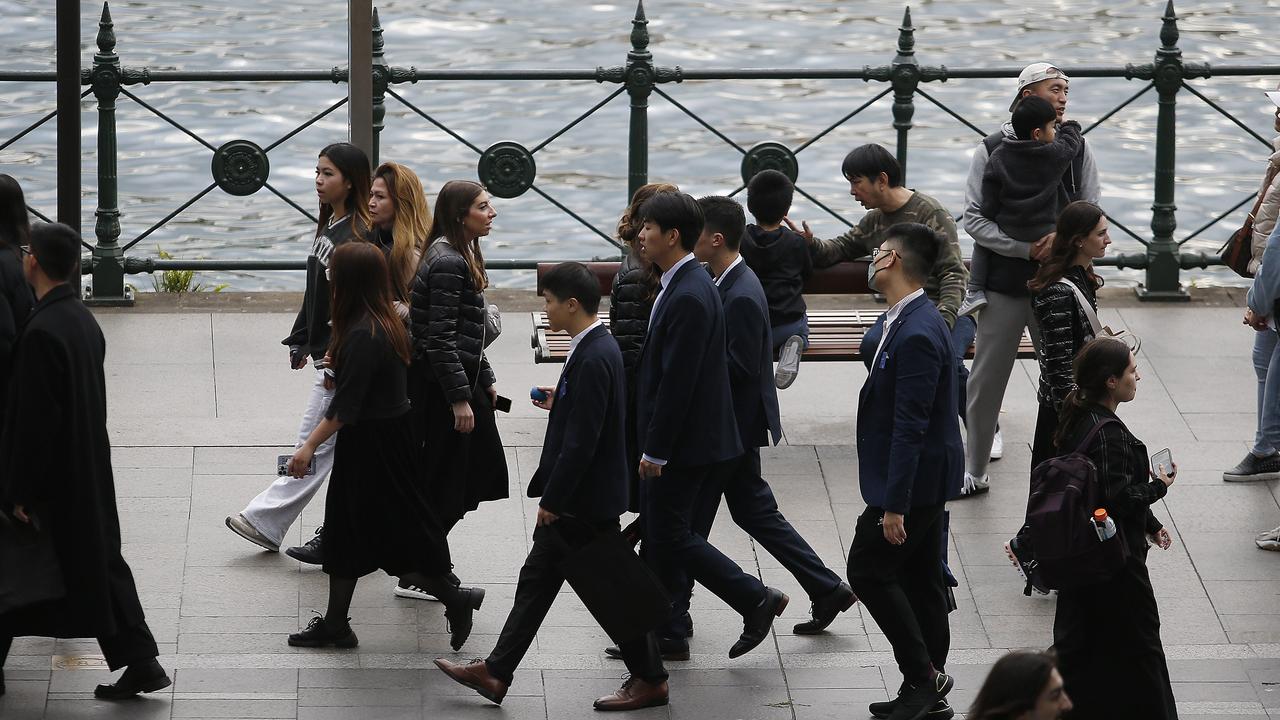Amazon wants to slash delivery times and costs by 25 per cent with robotics
A ‘Cambrian explosion’ in artificial intelligence – combined with Amazon’s 12-year investment in robotics – has allowed it to build its next generation of warehouses, and speed up deliveries further while reducing costs.

Business
Don't miss out on the headlines from Business. Followed categories will be added to My News.
Amazon has unveiled its “next generation” of artificial intelligence and robotic-powered warehouses that it says will slash delivery times – and the cost to process those deliveries – by 25 per cent.
At its Delivering the Future event in Nashville, Tennessee on Wednesday, Amazon showcased a suite of new products to further speed up online shopping orders, including a new AI tool that allows drivers to find packages more easily in cluttered vans.
It also showcased how a new AI assistant called “Rufus” was helping customers find the right product, which it called “conversational shopping”.
An augmented reality function can also enable customers to view an item in 3D in their own space, comparing it with the size of existing objects in their homes, as well as a try-on clothes virtually, with the aim of slashing the number of returns. It will launch these new AI features in Australia soon as part of a broader global rollout.
Doug Herrington, chief executive of Amazon Worldwide Stores, said many people had questioned whether the company could reduce costs and improve speed – which he said was crucial in stocking a broad range of products and keeping customers sticky.

AI explosion
But he said the “Cambrian explosion” in artificial intelligence – combined with Amazon’s 12-year investment in robotics – has allowed it to speed up deliveries further while reducing costs by about US45c a unit last year.
“When we speed up deliveries, customers shop more. We’re going to get a higher rate of conversion,” Mr Herrington said.
“Our investment in new innovations has never been larger. The breadth of innovation has never been broader. The shift to mobile was big, and then the shift to social was certainly interesting as well, but neither one of those came on as big or as fast as transition to AI.
“It’s just amazing the tool set. We’ve got teams who are going back to traditional products and services – redoing them or enhancing them with AI. We’re also able to then invent new experiences that we saw was like science fiction before or that we had tried and failed miserably in the past often.”

Next generation warehouse
Amazon’s next generation fulfilment centre is at Shreveport, Louisiana, which uses 10 times as many robots as a standard warehouse. The site spans almost 280,000 square metres – the size of 55 football fields – and is spread across five floors, with Amazon saying it will “transform the way we will work”.
It features eight types of robots, including Proteus – Amazon’s first fully autonomous mobile robot, that can navigate carts of packages while safely moving around employees in open spaces – and Cardinal, which one of Amazon's trio of AI-powered robotic arms — that can sort, stack, and consolidate millions of items and customer orders with precision.
It offers a glimpse of what Australians can expect from Amazon in the medium-term, with Amazon typically launching its new tech first in the US before deploying it across other companies it operates.
Mr Herrington said at Amazon’s next generation of sites it had cut fulfilment processing times by up to 25 per cent, enhanced shipping accuracy, and increased the number of items available for same-day and next-day delivery.
Quicker Australian deliveries
Amazon launched same day deliveries in Sydney in August as it invests an extra $1.6bn in its local network, and is planning to introduce the express times for its Prime members in other capital cities.
It has also introduced next day deliveries – which is free with a Prime subscription – in key regional areas, including Geelong, Gosford, Newcastle and Wollongong.

Finding parcels more easily
In the US, it has launched a Vision-Assisted Package Retrieval (VAPR) system, which uses AI to better organise and retrieve packagers from the backs of vans. The technology uses a system of cameras and projectors in the backs of vans to identify “dozens of packages and locate them instantaneously”.
How it works is it automatically projects a green “O” on all packages that will be delivered at that stop and a red “X” on all other packages, which Mr Herrington said allowed a driver to retrieve the correct package in about one minute. Previously finding the correct package in a van took up to five minutes.
Amazon says it will fit VAPR in about 1000 electric vans by early next year.
Higher value jobs
The tech behemoth’s foray into robotics began when the company acquired Massachusetts-based Kiva Systems in 2012 for $SU775m.
“2012 was our turning point when we acquired Kiva systems and ushered in a new age of robotics,” Udit Madan, Amazon vice president of worldwide operations said.
“This technology is making things dramatically better for our employees. enabling us to create new experiences for sellers and for customers. So we decided to go really big over the next decade,
“Over 75 per cent orders globally are delivered with the assistance of robotics within our operations.”

Amazon the use of the robotics was not a staff cost-cutting exercise.
“As we deploy this new generation of robotics across our network, we expect our headcount to continue to grow and we’re really excited by how this technology also creates more opportunities for skilled jobs. In fact, our next-generation fulfilment centres and sites with advanced robotics will require 25 per cent more employees in reliability, maintenance, and engineering roles,” Amazon said.
“These skilled jobs often require certifications, which we support through our Career Choice program, offering employees the opportunity to pursue them at no cost. Our mechatronics and robotics apprenticeship provides hourly wages up to 40 per cent higher than entry-level roles, underscoring our commitment to advancing employee careers.”
The author travelled to Nashville as a guest of Amazon.
Originally published as Amazon wants to slash delivery times and costs by 25 per cent with robotics



